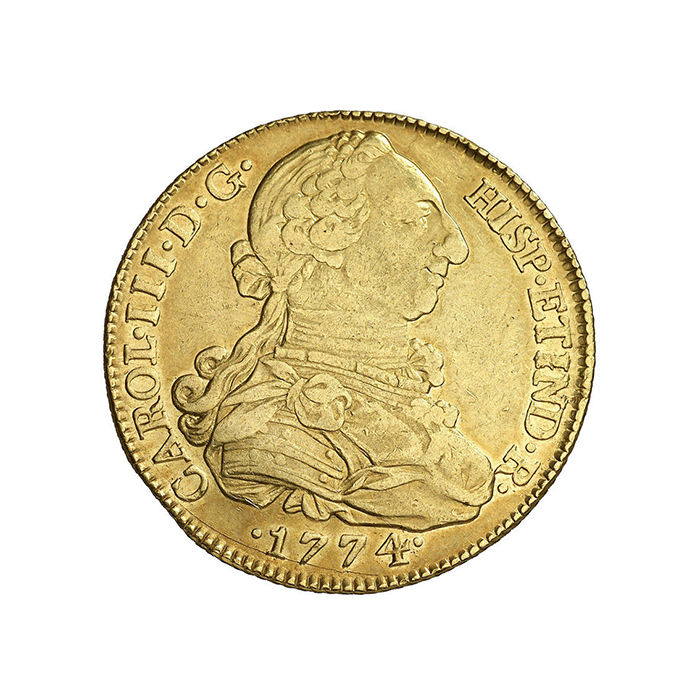The Spain Gold Escudo coin were first struck in 1535/1537. The rationale behind minting the escudos (also escuedos, scudis or escudis) was to aid Spanish merchants in trading with Spanish Argentina, Cuba, and Mexico. Their denominations remained in escudos up till 1833. The denominations available include the 8, 4, 2, 1, and ½ escudos. The 8 Spain Gold Escudo coin had the special name of doubloon or doblón in Spanish.
The gold fineness of the Spain Gold Escudo coins changed only slightly over centuries thereby indicating the stability of the currency. For example, the doubloon was made of 22-carat gold alloy with a fineness of .92. In 1537, it weighed 6.867g in gross mass and an actual gold weight of 0.218 t/oz. Starting 1728, the gross mass was adjusted to 6.766g. The weight of the eight-escudos coin was 27.4680g in 1537 with a fineness of .92 22-carat gold in 1537. In 1772, the gross weight and fineness were reduced to 27.06429g and .90103 respectively.
The various denominations and versions of the Spain Gold Escudo coins that were minted had diverse obverse and reverse features. However, the most common feature was that they all featured the effigy of the respective ruler under whom they were minted. For example, the escudos minted in 1788 during the reign of Kind Charles III had his draped bust facing towards the right side of the con. The inscriptions, “CAROLUS III ·” and D · G 0183 HISP · R” flanked the image on the left and right sides respectively and running clockwise. The year, “1788” appears at the bottom running clockwise and sandwiched between the two sets of texts. The reverse has an oval shield with a crown at the top and The Golden Fleece collar. The mintmark, “S” for Seville appears to the left.
The different versions of the Spain Gold Escudo coins available were minted either in Seville or Madrid. The coins struck at these two mints bear the marks, “S” and “M” respectively. Investors and collectors trading in the Spain Gold Escudo coins are not required to pay sales tax or VAT.
